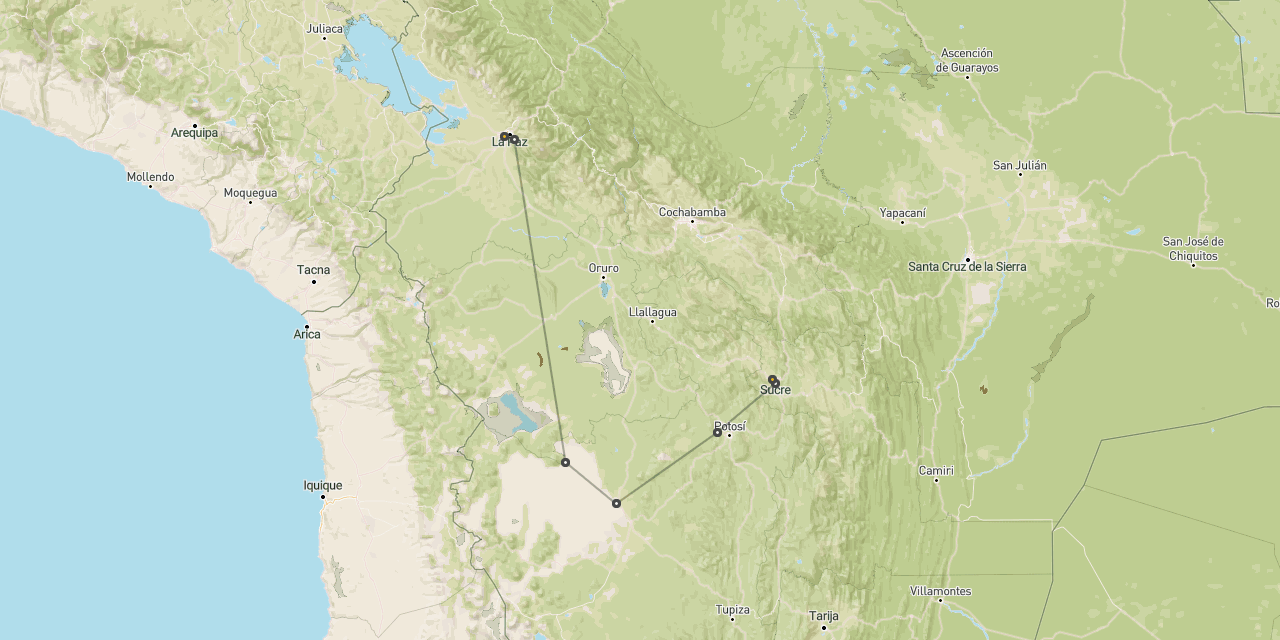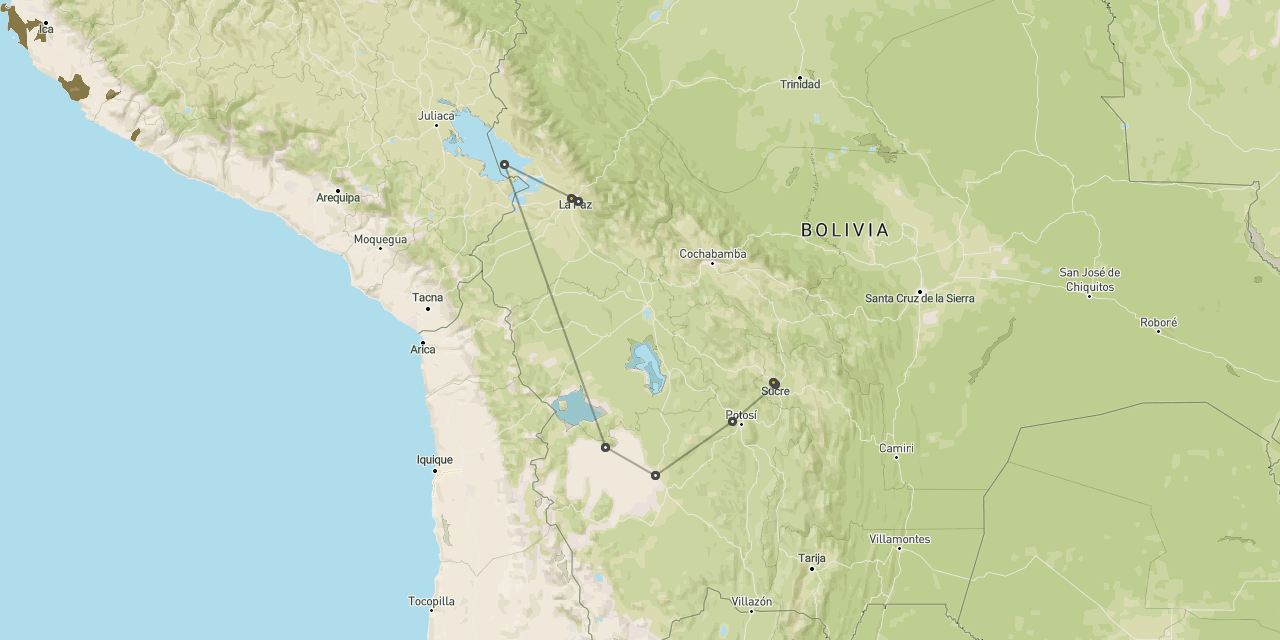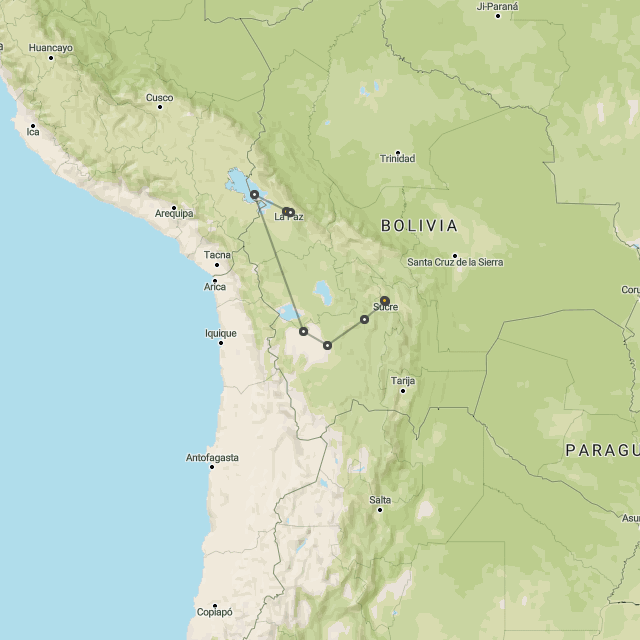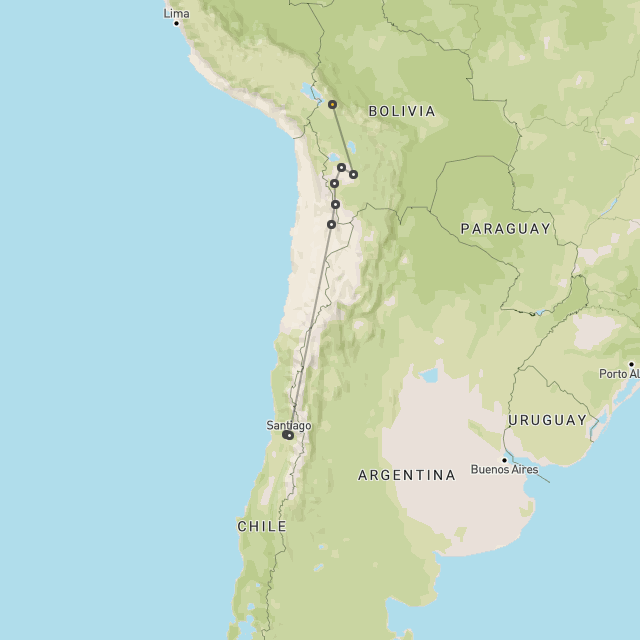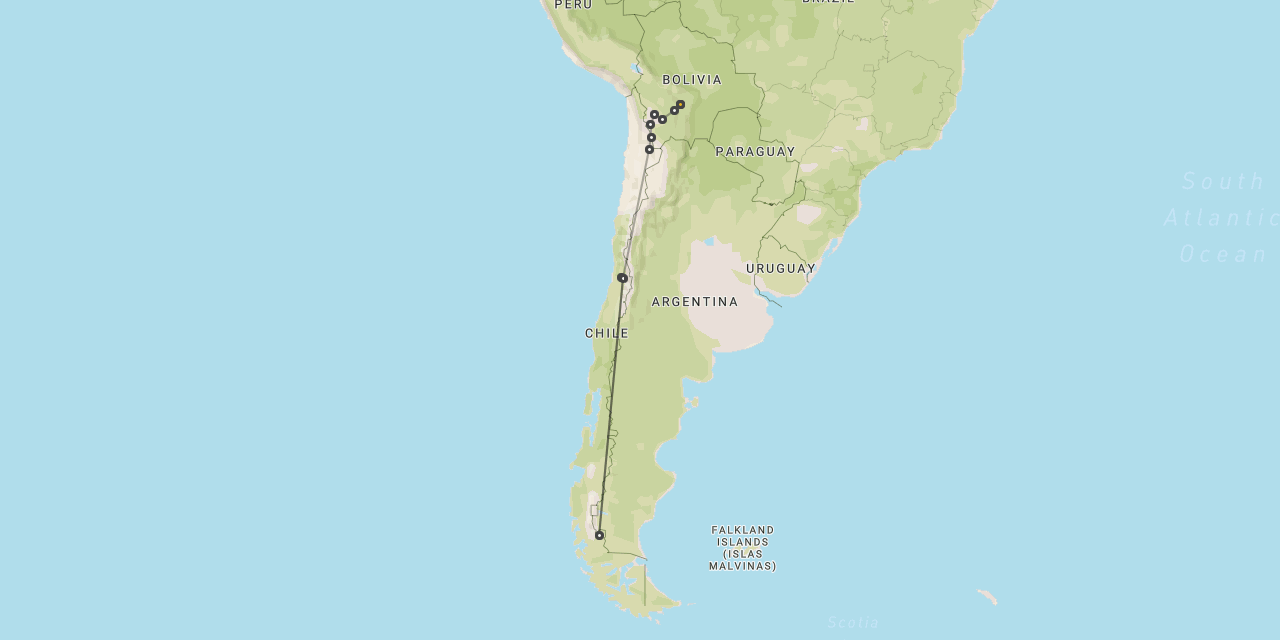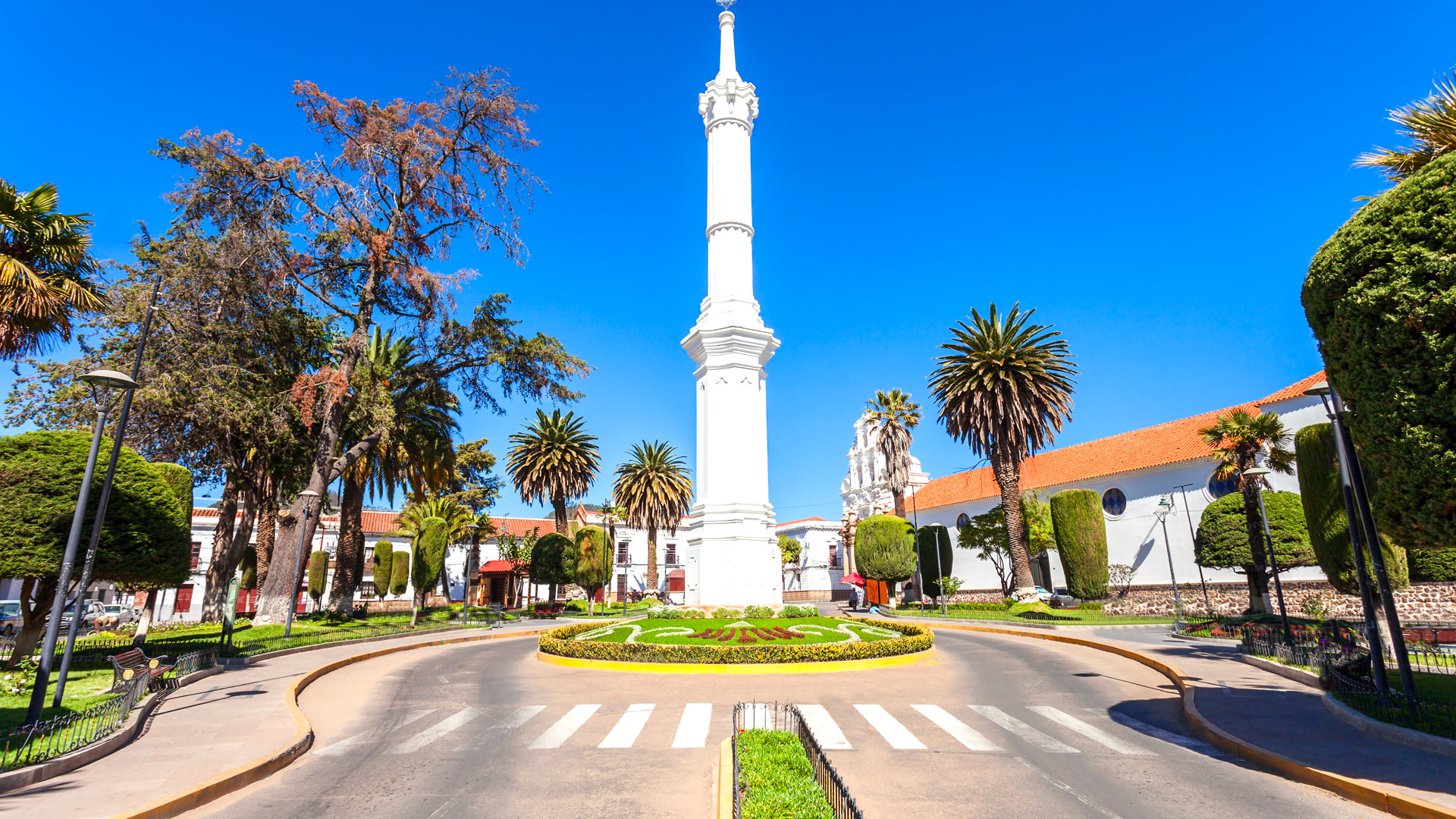
Travel to Sucre
Sucre
was the capital of Bolivia
up to 1898
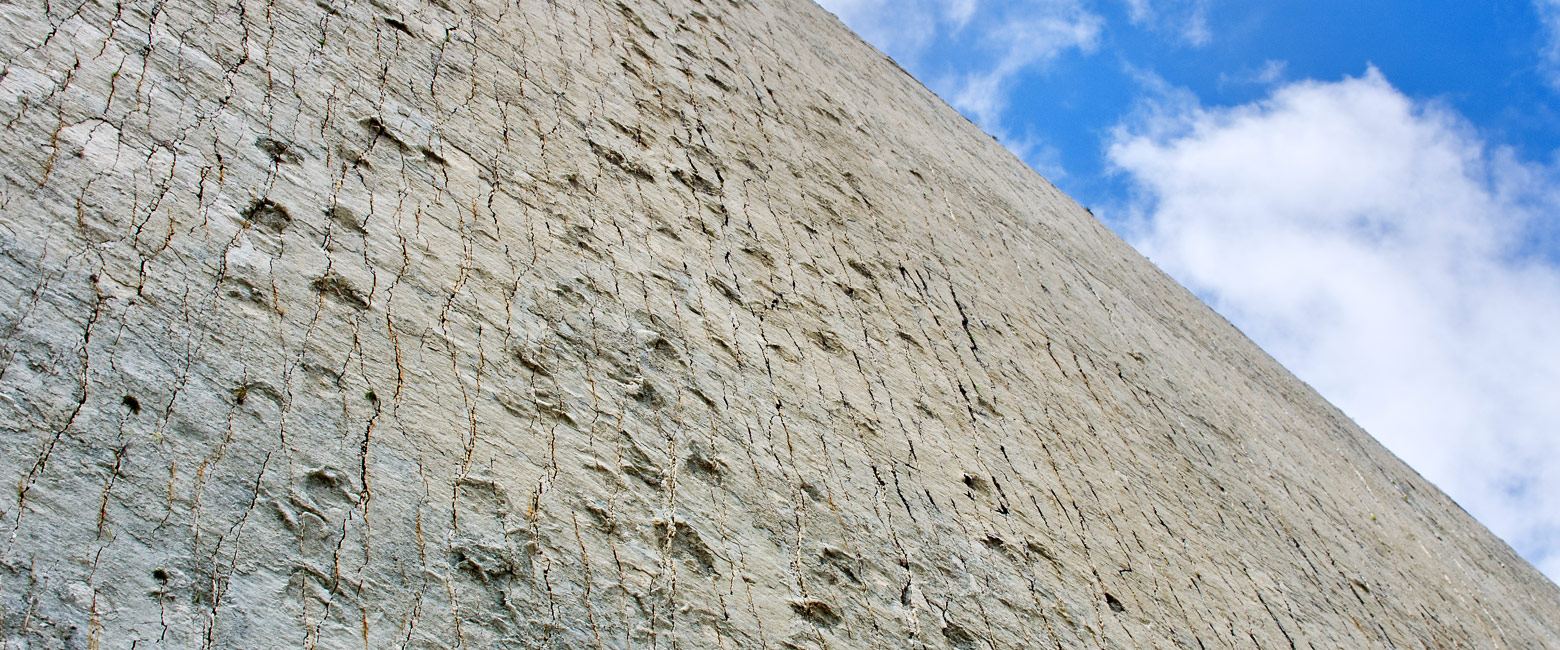
an ancient Inca town and the original Spanish capital
Set amongst the folds of the Andes Mountains in southcentral Bolivia, Sucre is a relatively small city of enormous historical significance.
The city is thought to have been established some time before 1000 AD, when it was known as Chuquisaca. When the Inca conquered the country around 1200 AD, the Charcas people of the city resisted and managed to retain an element of autonomy.
The Spanish arrived here in 1538 and renamed the place Ciudad de la Plata de la Nueva Toledo, or La Plata for short, with reference to the silver mines in the nearby Potosi area.
Appreciative of the comfortable climate here, the Spanish went on to establish La Plata as the most important inland city in South America, administering a vast region under the command of the Viceroy of Lima.
They also established a major monastery and, in 1624, the St Francis Xavier University of Chuquisaca, one of the oldest educational institutes in the Americas.
In 1809 the Bolivian independence movement (and by implication the independence movements across the whole of South America) was initiated by the ringing of the bell of the Basilica of Saint Francisco. The city was subsequently named as the capital of the new country in 1839 and given its present name of Sucre, in honour of a prominent revolutionary leader.
By the end of the 1800s, silver production in the mines of nearby Potosi had significantly declined and the capital was moved to La Paz.
Although Sucre is no longer the commercial hub of the nation, it remains a major administrative hub and the seat of the powerful Roman Catholic Church.
With a population of only 237,000, the modern city of Sucre is only an eighth the size of La Paz. As such, it really retains the atmosphere of a classic Spanish colonial town, which makes it all the more accessible for visitors.
The old town centre is packed with historic Spanish architecture and was declared a UNESCO World Heritage Site in 1991.
Playa 25 de Mayo
The old town of Sucre is centred on the pretty Playa 25 de Mayo, extending several blocks in each direction, with a host of historic buildings, including various impressive churches and monasteries.
Cal Orcko
Around 4 km northeast of Sucre there is a large industrial cement works, whose excavations have exposed an incredible vertical face of rock in which the tracks of various dinosaurs can clearly be seen.
These footprints are thought to date back to the Upper Cretaceous period, a remarkable 68 million years and were preserved by the settling and subsequent compression of volcanic ash.
There is a small dinosaur park on site, adjacent to the enormous industrial complex.
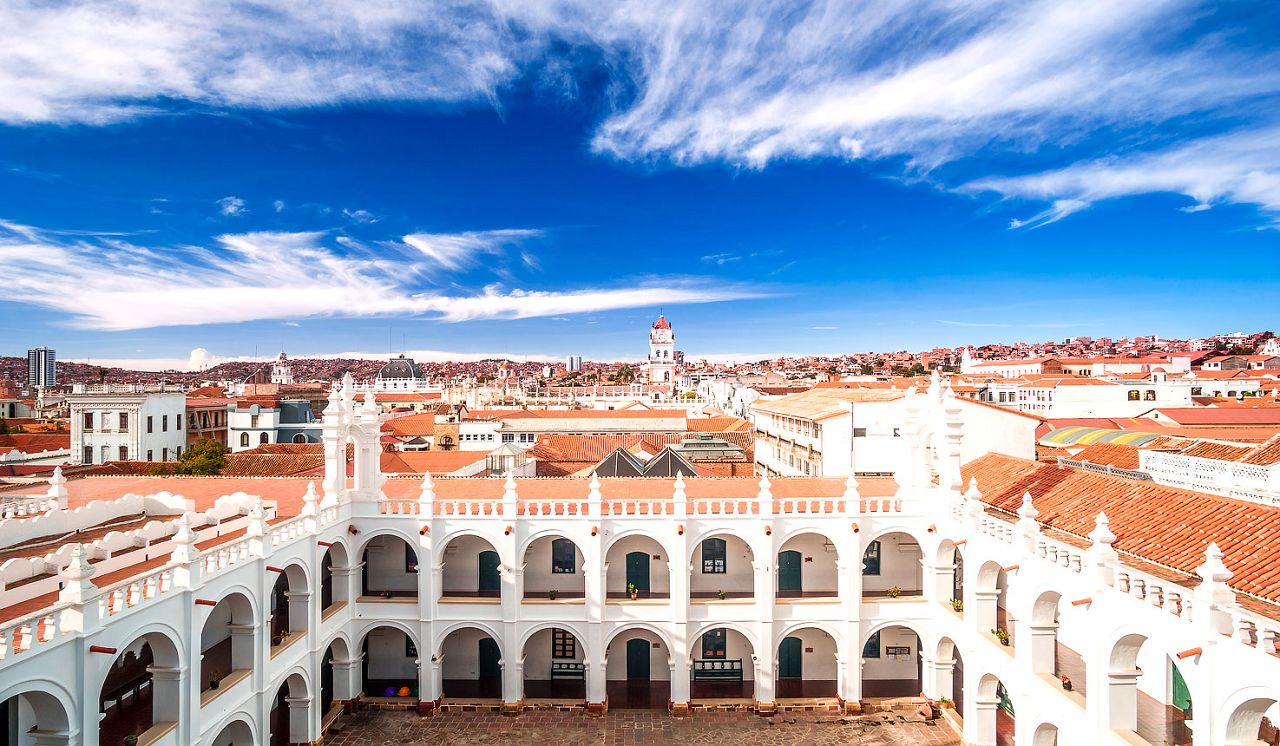
Gallery
Map
The best time to visit Sucre is generally considered to be during the Apr-Sep dry season.
Sucre has a subtropical highland climate, which is generally dry and temperate, with two clearly defined seasons.
During the Apr-Sep period the conditions are usually cool and clear, with lots of sunshine. Peak daytime temperatures are usually around 19C/66F, with nighttime lows regularly dropping to 8C/46F, but with occasional regular frosts. Average sunshine is up around 8-9 hours per day, peaking in August (around 75% of daylight hours). Rainfall during this period is extremely low.
During the Oct-Mar period the conditions are also largely cool, but with a good deal more cloud cover. Peak daytime temperatures usually reach around 20C/68F, with nighttime lows holding up around 13C/55F. Average sunshine drops to around 5 hours per day in February (around 40% of daylight hours). Rainfall increases to around 125mm (5”) per month, peaking in Dec-Feb.
Sucre lies at an elevation of 2810 metres (9214’).
Getting there
Sucre has a significant airport, with regular flight connections to La Paz.
We most commonly include Sucre in private guided overland safaris around the country, usually arriving in from Salar de Uyuni and Potosi and then flying out to La Paz.
Where to stay
There are a handful of decent small hotels in the historic centre of the city, contained within various period mansions. All of the recommended options are comfortable, characterful and convenient, so you can’t go too far wrong
an authentic and very appealing city
let us know your thoughts about Bolivia
and we will help you create the perfect trip
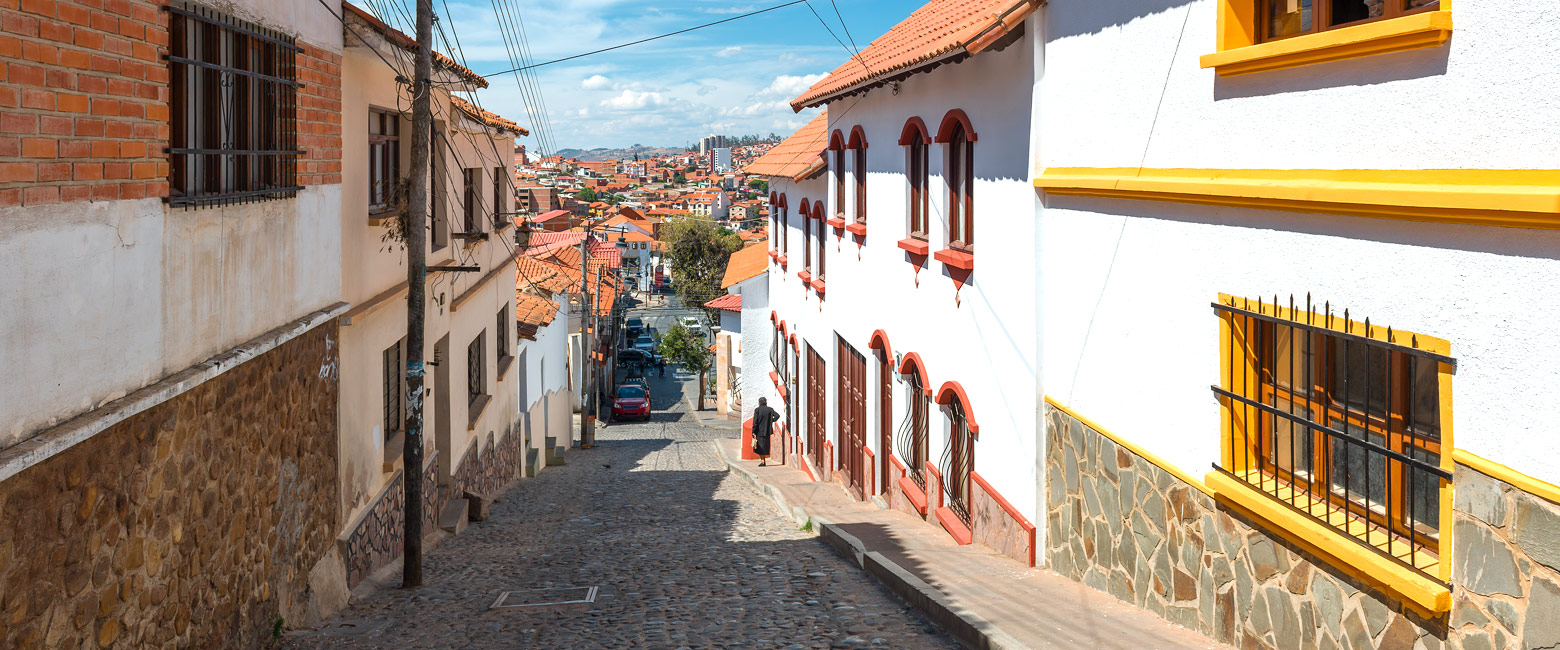
Extraordinary tailor-made adventures,
from earthy and edgy to easy and extravagant
From around USD 2500 per person, you set the ceiling
Sample Trips
Here are some of our popular trip shapes

Get started on your trip
It’s never too soon to get in touch, we are here to help with every stage of your planning.
Best Lodges
We regularly inspect and photograph all of the the best lodges, to ensure that we always recommend the most suitable options
Key Locations
Take a look around related locations. Click ‘View more’ to explore locations further afield.








